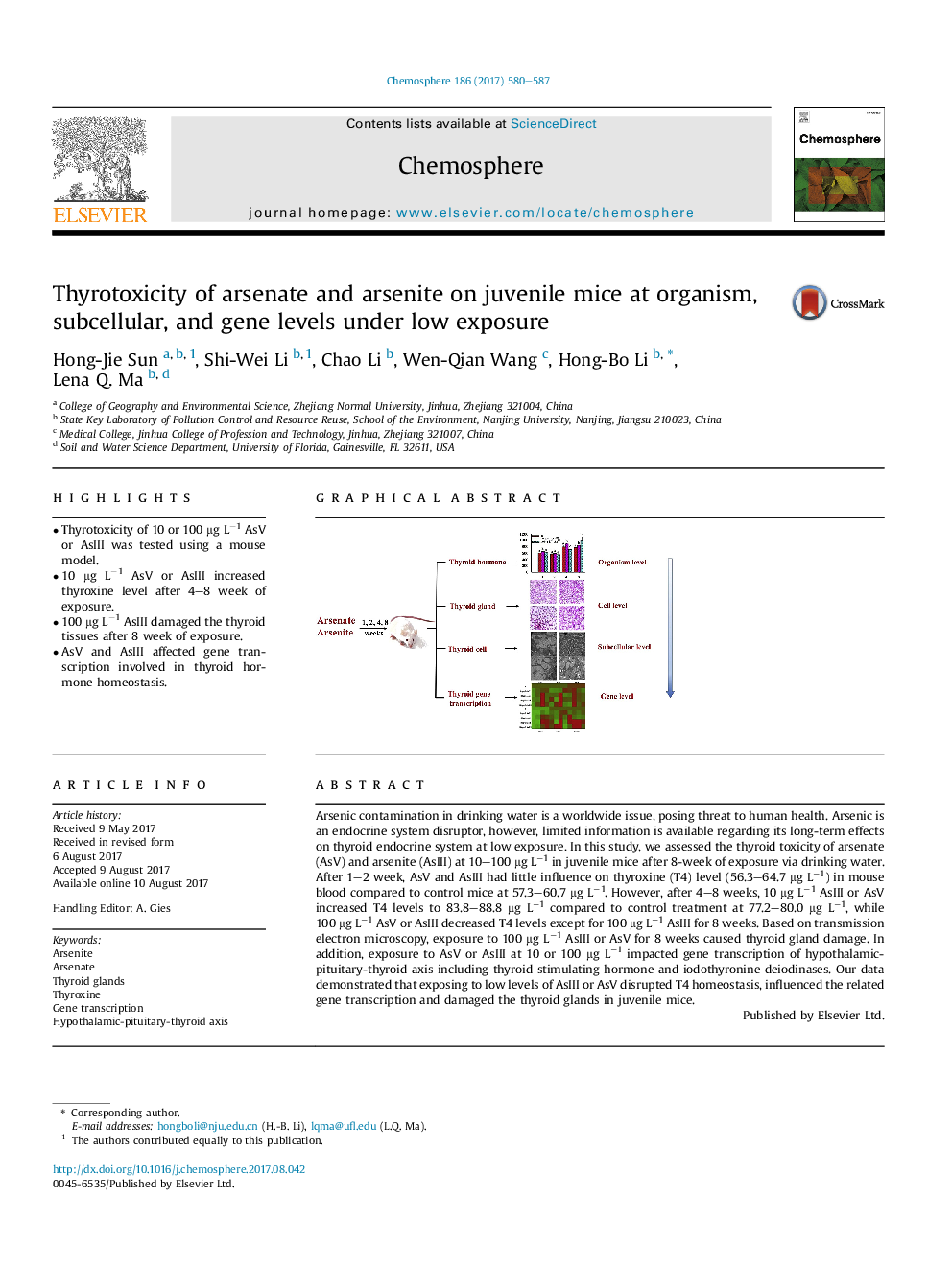| Article ID | Journal | Published Year | Pages | File Type |
|---|---|---|---|---|
| 5746065 | Chemosphere | 2017 | 8 Pages |
â¢Thyrotoxicity of 10 or 100 μg Lâ1 AsV or AsIII was tested using a mouse model.â¢10 μg Lâ1 AsV or AsIII increased thyroxine level after 4-8 week of exposure.â¢100 μg Lâ1 AsIII damaged the thyroid tissues after 8 week of exposure.â¢AsV and AsIII affected gene transcription involved in thyroid hormone homeostasis.
Arsenic contamination in drinking water is a worldwide issue, posing threat to human health. Arsenic is an endocrine system disruptor, however, limited information is available regarding its long-term effects on thyroid endocrine system at low exposure. In this study, we assessed the thyroid toxicity of arsenate (AsV) and arsenite (AsIII) at 10-100 μg Lâ1 in juvenile mice after 8-week of exposure via drinking water. After 1-2 week, AsV and AsIII had little influence on thyroxine (T4) level (56.3-64.7 μg Lâ1) in mouse blood compared to control mice at 57.3-60.7 μg Lâ1. However, after 4-8 weeks, 10 μg Lâ1 AsIII or AsV increased T4 levels to 83.8-88.8 μg Lâ1 compared to control treatment at 77.2-80.0 μg Lâ1, while 100 μg Lâ1 AsV or AsIII decreased T4 levels except for 100 μg Lâ1 AsIII for 8 weeks. Based on transmission electron microscopy, exposure to 100 μg Lâ1 AsIII or AsV for 8 weeks caused thyroid gland damage. In addition, exposure to AsV or AsIII at 10 or 100 μg Lâ1 impacted gene transcription of hypothalamic-pituitary-thyroid axis including thyroid stimulating hormone and iodothyronine deiodinases. Our data demonstrated that exposing to low levels of AsIII or AsV disrupted T4 homeostasis, influenced the related gene transcription and damaged the thyroid glands in juvenile mice.
Graphical abstractDownload high-res image (80KB)Download full-size image
